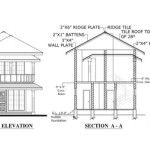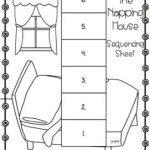DIY Shade House Plans: Creating a Protective Oasis for Your Plants
A shade house, also known as a shade tunnel or shade cloth structure, offers a valuable solution for protecting plants from the harsh elements and providing a controlled environment for optimal growth. Whether you're a dedicated gardener, a backyard enthusiast, or a commercial grower, a DIY shade house can be a rewarding project that enhances your gardening experience. This article outlines the fundamental steps involved in creating your own shade house, empowering you to build a haven for your plants.
Choosing the Right Location and Dimensions
A shade house's effectiveness is significantly influenced by its location and dimensions. Prioritize a location that receives adequate sunlight, while offering protection from strong winds and excessive rain. Consider the size of your shade house based on the types and number of plants you intend to cultivate. For example, a small shade house suitable for a few herbs or vegetables may differ from a spacious structure accommodating larger plants or multiple rows of seedlings. The shape of your shade house can also be tailored to your specific needs, with rectangular shapes being most common for their practicality and ease of construction.
Materials and Tools for Your Shade House
Assembling a DIY shade house requires a combination of materials and tools. The essential components include:
- Shade cloth: This forms the core of the shade house, providing essential protection from sunlight. Choose shade cloth with a percentage of shade that matches your plants' needs. For example, 50% shade cloth is suitable for plants requiring partial shade, while 80% shade cloth is ideal for delicate seedlings or plants sensitive to intense sunlight.
- Support poles: These provide structural integrity to the shade house, ensuring its stability and durability. Depending on the size of your shade house and the weight of the shade cloth, you can utilize various materials like wooden poles, PVC pipes, or metal frames.
- Connectors: These elements hold the support poles together, creating the framework of your shade house. Depending on the materials chosen, you can utilize rope, zip ties, brackets, or other suitable connectors.
- Fasteners: Secure the shade cloth to the support poles using wire, staples, or zip ties. Select fasteners compatible with your shade cloth and support materials.
- Optional features: Consider incorporating features like a water source, drainage system, or ventilation for enhanced functionality.
Tools essential for constructing the shade house typically include a measuring tape, saw, drill, screwdriver, hammer, and pliers. Ensure you have the necessary tools and safety equipment readily available for a smooth construction process.
Detailed Steps for Building Your Shade House
Once you have chosen the location, dimensions, and materials, the next step involves assembling the shade house. The following steps provide a detailed guide.
- Prepare the site: Clear the chosen location of debris, vegetation, and any obstacles that may interfere with construction. Level the ground to ensure stability for the shade house.
- Assemble the framework: Install the support poles according to your chosen design. Use connectors to secure the poles together. If using wooden poles, consider treating them with a water-resistant sealant to enhance durability.
- Attach the shade cloth: Drape the shade cloth over the framework, ensuring it is evenly distributed. Secure the shade cloth to the poles using fasteners. Consider using a tensioning system to maintain the cloth's tautness over time.
- Install additional features: If desired, incorporate features like a water source, drainage system, or ventilation. Ensure these features are securely attached and compatible with your shade house's design.
- Inspect and test: Once the shade house is assembled, carefully inspect the structure for any loose connections or structural issues. Conduct a test by applying a slight load to ensure its stability and withstand environmental conditions.
With these steps, you can create a durable and effective shade house that provides optimal protection for your plants.

Factory Suppliers Of High Quality Diy Shade House Materials Direct

Poly Pipe Greenhouse And Shadehouse With Sprinkler System 8 Steps Pictures Instructables

Greenhouse Shade House Hybrid Build

Poly Pipe Greenhouse And Shadehouse With Sprinkler System 8 Steps Pictures Instructables

Diy Freestanding Shade Canopy For Garden The Joy Blog

Factory Suppliers Of High Quality Diy Shade House Materials Direct

Poly Pipe Greenhouse And Shadehouse With Sprinkler System 8 Steps Pictures Instructables

Poly Pipe Greenhouse And Shadehouse With Sprinkler System 8 Steps Pictures Instructables

Protection From Fruit Fly In Your Garden Starts With Netpro Net

Easy To Build Polypipe Greenhouse Ecos








